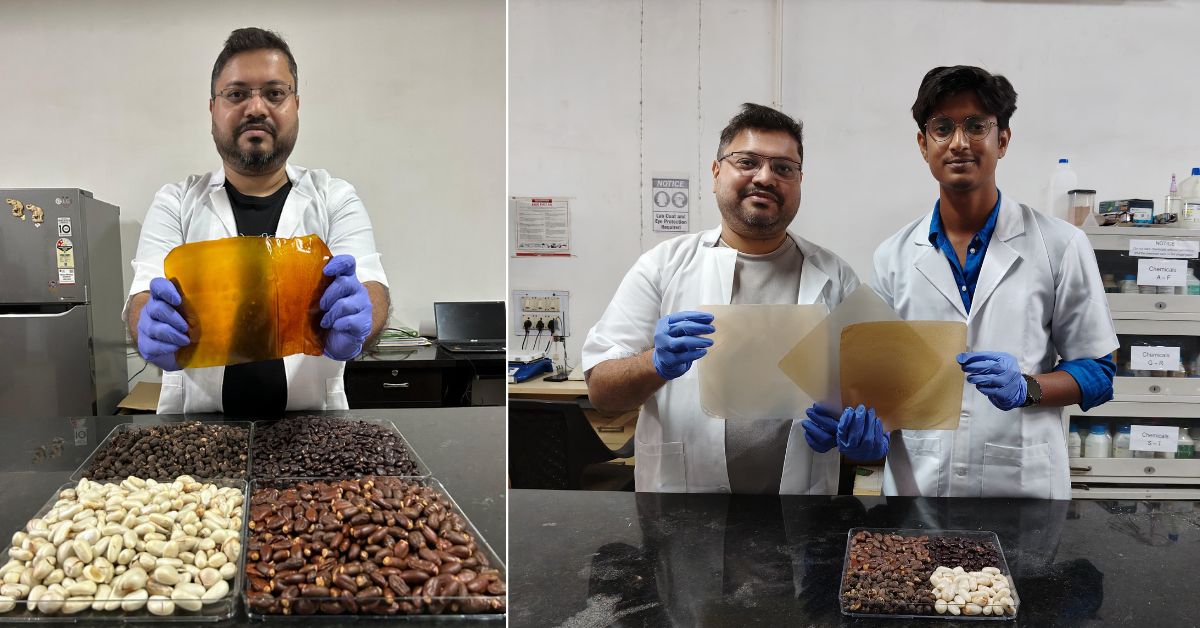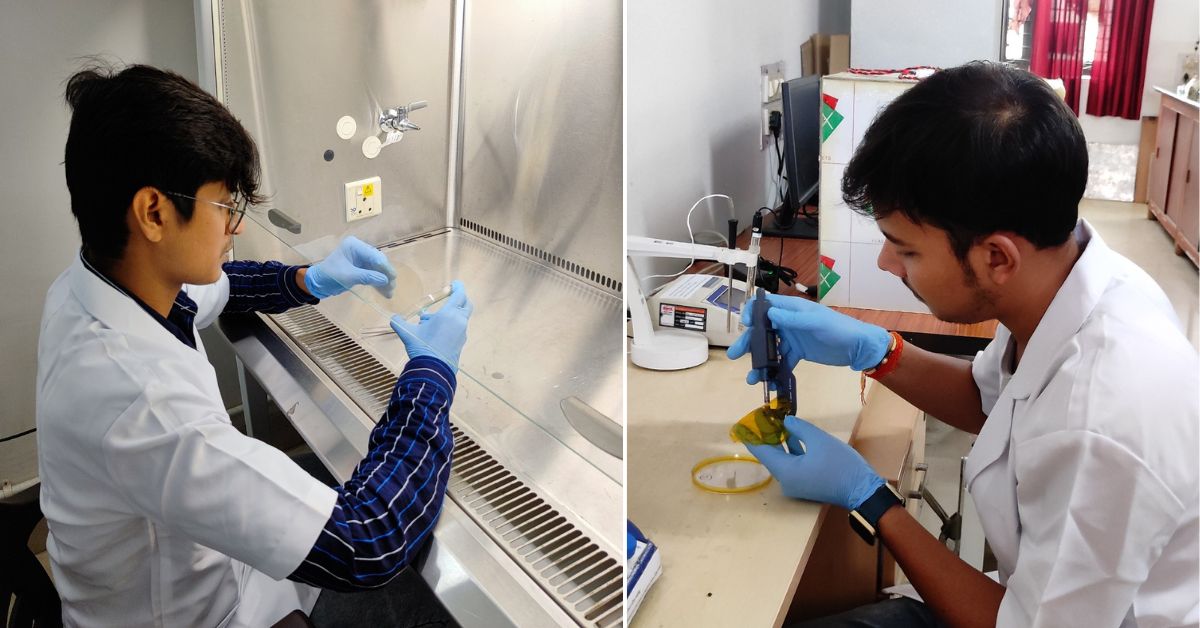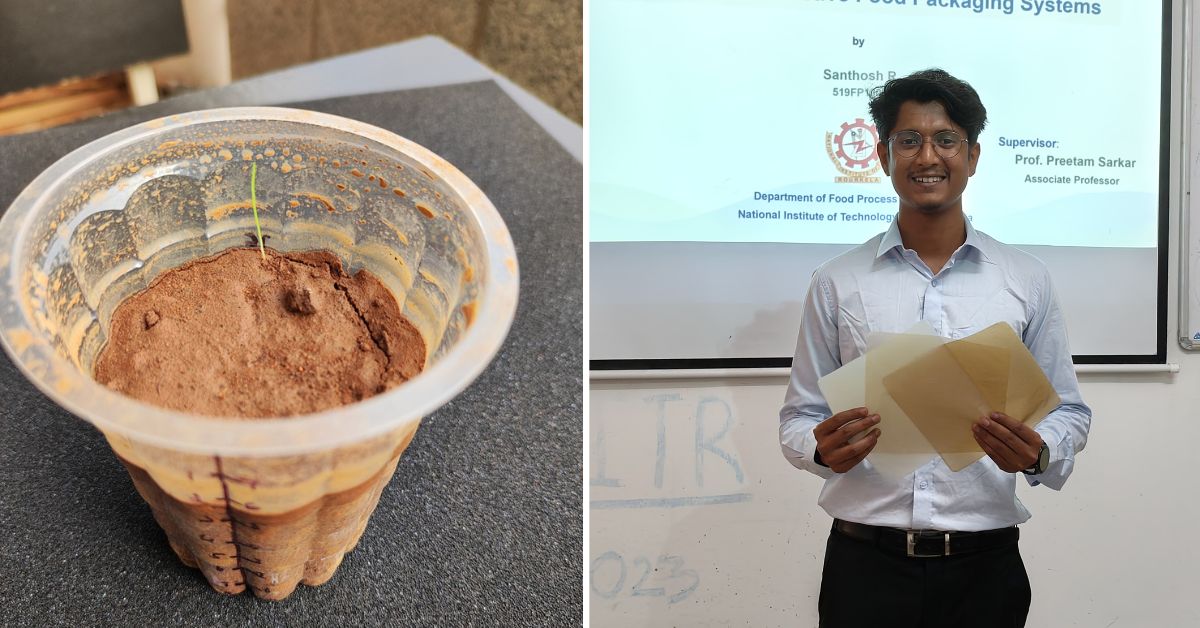Scientists Turn Fruit Seeds into Packaging That Vanishes in 60 Days
Imagine, for a moment, a world wherein the very essence of what we discard — agricultural byproducts and natural polymers — forms the solution to one of our most pressing environmental crises: plastic waste.
This is not a distant dream but an emerging reality, thanks to the diligent efforts of researchers around the globe. At the forefront of this innovation is a team from the National Institute of Technology (NIT) Rourkela, peeling the layers of possibility hidden within the shells and seeds of everyday fruits.
Under the leadership of associate professor Dr Preetam Sarkar, the Department of Food Process Engineering is giving new life to the materials that have long been sidelined as waste.
With a touch of human ingenuity, agricultural waste has been transformed into biodegradable films that hold the promise of revolutionising food packaging. The seeds of jackfruit, jamun, and litchi are stepping into the limelight.
 These underutilised byproducts harbour promising potential for creating eco-friendly packaging.
These underutilised byproducts harbour promising potential for creating eco-friendly packaging.
The innovation was a collective effort of Dr Santhosh Ravichandran, Rahul Thakur, Bindhu Sravanthi, and Souvik Giri under the guidance of Dr Preetam. What treasures lie within these humble kernels? We sat down with Dr Preetam and one of the students, Dr Santhosh Ravichandran, whose efforts led to this innovation.
Unveiling the potential of seeds
The ubiquity of plastics in the global food industry is undeniable. Synthetic plastics such as low-density polyethylene (LDPE), high-density polyethylene (HDPE), and polystyrene (PS) are widely used due to their durability and flexibility. However, their environmental cost is staggering.
“These petroleum-derived materials contribute significantly to pollution, with decomposition periods extending up to 700 years. As plastics degrade, they fragment into microplastics and nanoplastics, infiltrating ecosystems and raising severe health concerns, including cancer and reproductive issues,” Dr Preetam tells The Better India.
In response to these challenges, Dr Preetam’s team chose an unconventional path: valorising agricultural waste. “The key materials selected are starches obtained from the seeds of jackfruit, jamun (Indian blueberry), and litchi, coupled with tamarind kernel polysaccharides (complex carbohydrates),” he shares.
These underutilised byproducts harbour promising potential for creating eco-friendly packaging. Explaining further, he adds, “Jackfruit seeds, typically cast aside after a hearty feast, are abundant in starch — a natural polymer that, when processed, forms a robust base for biodegradable films. Similarly, jamun seeds bring their own unique properties to the fore. Litchi seeds, although petite, pack a starch-filled punch, contributing to the strength and flexibility of the resulting packaging.”
 After tomatoes are wrapped in these innovative films, their lifespan extends by days or even weeks.
After tomatoes are wrapped in these innovative films, their lifespan extends by days or even weeks.
“Whereas tamarind kernel polysaccharides offer excellent mechanical strength and barrier properties,” he adds.
The science does not stop here. To enhance the protective qualities of these films, Dr Preetam’s team integrates another layer of fascinating ingredients — nanoparticles – think zinc oxide, chitosan, and lignin nanoparticles.
“Zinc oxide nanoparticles are known for antimicrobial activity; they contribute to food safety, whereas chitosan nanoparticles add antimicrobial properties and lignin nanoparticles add antioxidant activity and enhance the film’s biological efficacy,” he explains.
Each introduces a layer of magic, or more precisely, antimicrobial and antioxidant properties. These nanomaterials are essential in creating barriers strong enough to safeguard perishables against harmful microbes like Bacillus cereus and Escherichia coli that may cause foodborne diseases.
Biodegradable films that extend shelf life
Dr Preetam shares that the application method for these films involves an innovative dipping technique, which forms a protective emulsion coating on the fruit. In trials, the team has shown significant shelf-life extension — for instance, tomatoes sealed with the biodegradable film lasted 15 days longer than without.
 Researchers have transformed agricultural waste like jackfruit, jamun, and litchi seeds into biodegradable films.
Researchers have transformed agricultural waste like jackfruit, jamun, and litchi seeds into biodegradable films.
Imagine tomatoes, bananas, and sapotas snugly wrapped in these innovative films, their lifespan extended by days or even weeks.
Speaking with The Better India, Santhosh says, “I have dedicated almost a year to developing films from whole seed powders of jackfruit, jamun, and litchi. But initially, I didn’t succeed. However, I was convinced of the seeds’ potential as strong natural materials suitable for composites. This led me to analyse their composition and isolate the primary compounds contributing to their hardness.”
“Upon extracting and casting these compounds, I produced flexible films. To further enhance their properties, I incorporated natural nanofillers derived from byproducts. This significantly improved the films, which performed excellently as coatings for tomatoes, sapota, and bananas,” he tells The Better India.
Interestingly, these eco-friendly films also decompose within 60 days.
 As the films degrade, they transform into nutrients for soil microbes and plants.
As the films degrade, they transform into nutrients for soil microbes and plants.
“We do biodegradability studies in small cups. During this study, I found a small plant that started growing in those cups. Once the films degrade, they become nutrients for the soil microbes and plants. That is exactly the circular economy we wanted to bring,” says Santhosh.
But how durable can such natural materials be? “This is where human curiosity meets material science, as the films exhibit mechanical strength comparable to conventional plastics like LDPE or polypropylene,” says Dr Preetam.
“As consumers, we become stakeholders in this movement, supporting innovations that promise a less polluted, more balanced world,” he adds.
The transition from plastic to these biodegradable alternatives isn’t merely an industrial shift, it’s a cultural one — one that aligns with our growing awareness of environmental stewardship. Each film, meticulously engineered yet inspired by nature, questions the paradigms of consumerism: What if waste weren’t the end but a new beginning?
So, as you ponder the fruits you hold in your hand and the packaging that encases them, let curiosity lead you. What if each seed, each shell, harbours the secret to a cleaner planet? What if the next stride in sustainable innovation lies, quite literally, in the palm of our hands?
Edited by Vidya Gowri; All images courtesy Dr Preetam Sarkar and Dr Santhosh Ravichandran.
News